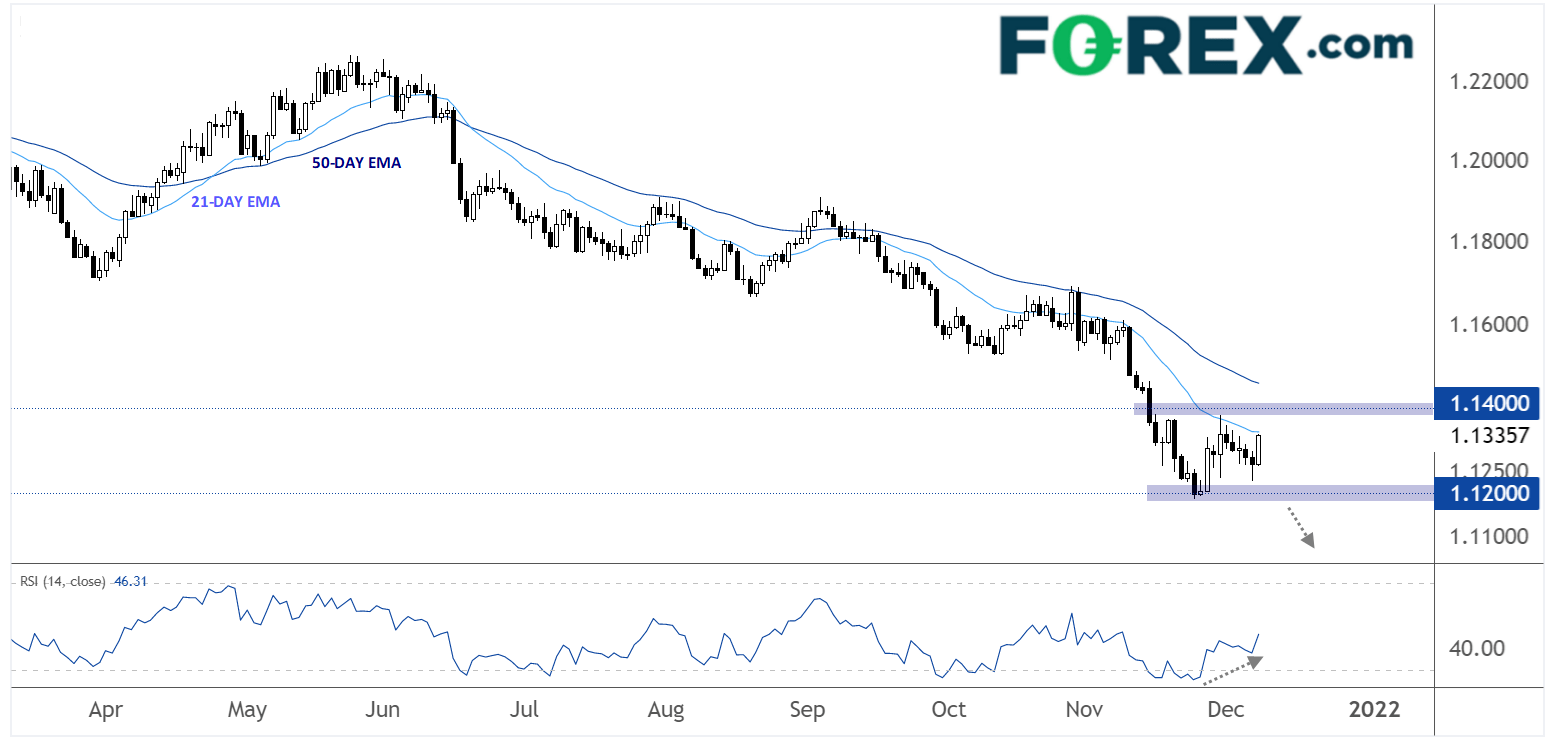As experienced traders know, market volatility and volume tends to dry up around the holidays in the final two weeks of the year, but before we get there, there are a number of high-impact economic releases over the next ten days. For US-based traders, the proverbial “last hurrah” of 2021 will be the Federal Reserve’s monetary policy meeting on Wednesday, but the appetizer ahead of that main course will undoubtedly be Friday’s highly-anticipated Consumer Price Index (CPI) report from November.
While its theoretically not the Fed’s preferred inflation measure (that honor goes to the Core Personal Consumption Expenditures reading), the CPI report is the one that holds more weight with consumers, and by extension, politicians. In fact, the 6.2% reading in the October CPI, a 30-year high, appears to have been the catalyst that prompted Fed Chairman Jerome Powell to make his hawkish pivot toward favoring a more aggressive taper, so Friday’s inflation reading will undoubtedly be top of mind for the central bank heading into its final meeting of the year.
What are traders expecting from the November CPI report?
Unfortunately for frustrated US citizens, the headline CPI reading is expected to rise even further on Friday. As we go to press, traders and economists are expecting a 6.8% y/y rise in headline CPI (0.7% m/m) as the US economy continues to struggle with ongoing supply chain shortages and rising labor costs. If it meets these expectations, this would mark the highest annual increase in consumer prices since 1982.
Digging into the details, there are still relatively few items accounting for the majority of the increase in inflation, highlighted by the 26.4% y/y increase in used cars and 30.0% increase in energy prices as of last month’s reading; notably oil prices fell nearly 20% through the month of November, so the energy component at least may see some relief in this CPI report. That said, the breadth of goods and services seeing price increases is broadening, suggesting that Fed Chairman Powell may have been correct to retire the “transitory” characterization of price pressures.
Market to watch: EUR/USD
Friday’s inflation report will have a big impact on everything from stocks to bonds to commodities, but we wanted to key in on EUR/USD in particular. The world’s most widely-traded currency pair has found a semblance of support in recent weeks, but the dominant fundamental storyline driving rates lower has been the relative hawkishness of the Fed compared to the ECB, and if we see another hot inflation reading, that could extend the monetary policy gap further heading into 2022.
Technically speaking, EUR/USD has spent the last three weeks consolidating in a sideways range between 1.1200 and 1.1400. This recent rangebound price action has allowed the pair to correct its oversold condition through time, rather than an outright rally in price, potentially setting the table for a breakdown if Friday’s inflation reading leads to a more aggressive taper from the FOMC next week. A break below 1.12 could open the door for a continuation toward the mid-1.10s, where previous resistance from May 2020 and the 78.6% Fibonacci retracement converge next.

Source: TradingView, StoneX
Of course, no setup is foolproof, so it’s worth considering the opposite scenario: A cooler inflation reading and/or continuation of the Fed’s current taper plans could prompt EUR/USD to break above 1.1400 and potentially expose the 50-day EMA near 1.1450.
